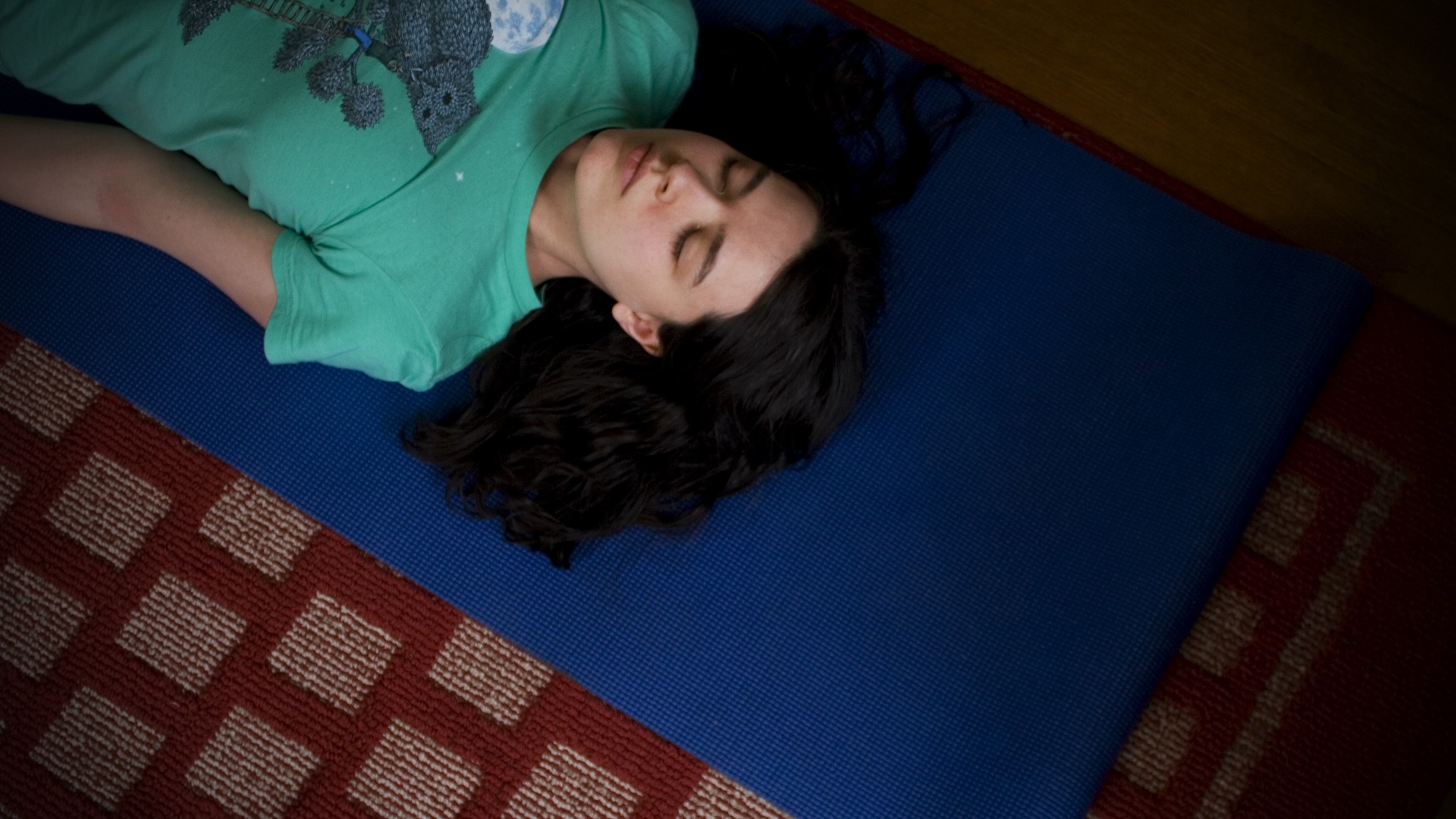Have you ever had one of those frustrating days when your spirit craved time on the mat, your body begged for the delicious fluidity of Sun Salutations, but intuitively you knew that physical movement would weaken your already weakened state?
I lived eight months of that last fall and this spring.
I had just returned from a two week, two hundred mile trek through the hills of the Cotswold’s in England, all of it while enduring heavy hemorrhaging.
My body was signalling me that menopause was indeed imminent, and this was its last hurrah. Because I put so much stress on it during the trek, I exacerbated my condition, lost ten pounds, and came home to eight more months of hemorrhaging. Not kidding.
I desperately needed to stretch, move, regain some peace of mind, because everyone was screaming that I needed a hysterectomy and I was convinced that given time, my body would come to a place of balance.
I dreamed of yoga. I needed it. But when I tried, I was quickly pulled back by my ever so wise body, which said, “Be still.”
I spoke to my yogini daughter Elizabeth, and she told me about Yoga Nidra (sleep meditation).
“But isn’t that just Savasana?” I asked.
I have learned a lot about it since then, and my body is ever so grateful. Yoga Nidra kept me on the mat when I most needed it, without the pressure of physical exertion.
Now I practice Yoga Nidra in the evenings as a meditation, and on the days when my body needs a break, but my spirit needs a lift.
What is Yoga Nidra?
Yoga Nidra is a practice that combines alert awareness with deep relaxation. The brain reaches the alpha state and continues on to the theta wave stage. It is practiced in a lying down position, (as in Savasana), for at least twenty minutes where you are guided through a series of breathing exercises and simple instructions.
Instructions include visual imagery which help to eliminate mind-chatter of the conscious mind.
At this time, the focus shifts to the third eye, between the eyebrows. Now you are accessing both the logical left brain and the intuitive, insightful right brain, and experiencing deep relaxation while remaining conscious and aware. I assure you, it’s a surreal and incredible space to relax into.
Focusing on the third eye reactivates hormones located in the pineal gland in center of the brain.
The pineal gland is responsible for the hormone Melatonin. Healthy levels of Melatonin within the body can:
- Prevent illness
- Retard premature aging
- Reduce stress
- Induce restful sleep
- Boost the immune system
- Relax the nervous system
- Lower blood pressure and heart rate
During normal waking hours our brain produces faster, fragmented beta waves. This engages the sympathetic nervous system which react with the secretion of adrenaline. Chronic engagement of this state forces the right brain and parasympathetic nervous system to progressively become more dormant.
Yoga Nidra allows you to engage conscious Pranic intelligence, where intention is carried out spontaneously and effortlessly. When we practice yoga we seek to balance the sympathetic and parasympathetic nervous systems, the left and right brain. We reach homeostasis, balance, and are more open to communication with the Divine during yoga, especially Yoga Nidra.
I found my time in Nidra helpful for releasing suffering caused by my own thought patterns. While in the theta brain wave stage, my ego is quite silent.
The qualities of faith, trust, love and compassion are activated within my being and my physical body reacts by healing itself, the compassion felt on a spiritual level permeates my cells and releases old patterns.
On the other side of joy and love live anger, fear, hatred and other equally destructive emotions. I awaken from Yoga Nidra exquisitely free of my usual worries. Magical indeed.
I do not believe in Karmic debt but those who do and practice Yoga Nidra believe that they can trigger the karmic release button of their karmic state.
6 More Benefits of Yoga Nidra:
1. Deep state of relaxation, possibly deeper than most people experience during sleep.
2. Can alter state of mind, helpful with depression and anxiety.
3. Improves quality of sleep.
4. Sharper brain function, concentration and memory.
5. Reduces or eliminates migraine headaches.
6. Awakens the psyche, allowing access into intuition, creativity, health and abundance.
Right now, my partner is experimenting with healing concussion symptoms through Yoga Nidra, such as his sensitivity to EMF’s from the computer and TV, sound and light.
Try it instead of your afternoon nap or just before sleep, or whenever you feel emotionally drained.
Yoga Nidra is truly a practice for every day of the month, physically, emotionally and spiritually.
I’ve included two Yoga Nidra videos for you to choose from, but many more are available on You Tube or on DVD.
Namaste
Sources:
Author: Monika Carless
Editor: Renee Picard
Image: kimonomania at Flickr







Read 0 comments and reply